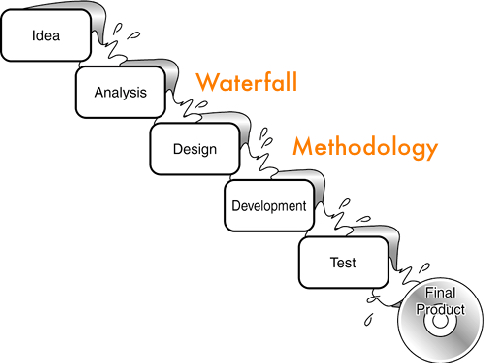
22 Mar Waterfall Methodology UX
Ethnographic research (Contextual Inquiry) is an UX technique in which research occurs at the real world location where the experience is intended to occur. This approach values the context in which the digital product is being used as a key factor to consider in its design.
Deliverables:
- Participant Recruitment
- Ethnography Plan
- Ethnography Script
- Contextual Research (On-site)
- Reporting and Documentation
- Video/Audio Research Highlights Reel
- Finding’s Presentation
User Personas are research-based archetypes that represent the user for whom we are designing.
What’s important is that they offer a specific, common and consistent explanation of our audience and apply a human face to what was previously a vague and intangible notion. This matters because they allow us to prioritize features and to make informed decisions. The more that we can understand about our user’s goals and limitations, the better able we are to design experiences that meet their needs and matter to our customers.
Deliverables:
- Stakeholder Interviews
- Video/Audio Research Highlights Reel
- User Personas, Short Format (Action Cards)
- User Personas, Detailed Format
- Persona Presentation
A heuristic review occurs when a usability expert sits down and evaluates work product (tablet, Web, mobile, etc.) according to a set of established guidelines.
Heuristic reviews are a good starting point for most digital projects. A well-trained usability expert should be able to identify a number of user experience shortcomings. It provides a quick win independent of end user participation. These types of reviews can also occur to survey the competitive landscape.
Deliverables:
- Heuristic Review
- Competitive Analysis
- Reporting and Documentation
- Finding’s Presentation
Participatory Design (Cooperative Design) method involves the customer during the early stages of the design cycle when there is room for innovation and fresh thinking. Participatory Design asks the customer to participate in the design process to ensure that the end result meets their needs and is highly usable.
Deliverables:
- Participant Recruitment
- Participatory Design Script
- Participatory Design Sessions
- Video/Audio Session Highlights Reel
- Reporting and Documentation
- Findings Presentation
Prototype + Design. A core UX deliverable is the Site Map. These documents, often represented in a tree format, indicate a hierarchical organization.
Sitemaps are usually supported by Process Flow documents that illustrate potential customer use cases and wireframes. Wireframe documents are schematics that map out key page elements and interactions.
The Creative, the look-and-feel aesthetics, follows the UX design docs since it is built upon the foundation that those deliverables provide.
Deliverables:
- Site Map
- Process Flow
- Wireframe
- Prototype
- Creative
- Presentation
Usability testing is a testing method in which representative customers (“participants”) are asked to accomplish real goals with a prototype while a UX specialists notes their likes and dislikes.
This core UX activity is incorporated throughout the project life cycle and is part of the iterative design process that moves work from rough designs to highly usable end results.
Deliverables:
- Participant Recruitment
- Testing Plan
- Testing Script
- Usability Testing Sessions
- Video/Audio Highlights Research Reel
- Reporting and Documentation
- Findings Presentation
The Functional Specification document details all of the properties of the design so that the developers have a blueprint from which to create. SEO and Analytics planning is a core feature of this document. The Technical Specification which addresses and maps out in detail how the developers will technically accomplish what the Functional Specification calls for.
Deliverables:
- Requirements
- SEO Plan
- Analytics Measurement Plan
- Technical Specifications
During the implementation phase of the project while code is being produced, UX typically provides oversight to the developers to ensure that the UX guidelines are being properly followed.
An core activity during this stage is to answer and provide UX design solutions for any new and unanswered questions that may come up during development.
Deliverables:
- Coding/Development
- UX Design for new issues/questions
- Quality Assurance Process
- Optimize Based on User Response Measurement
Error: Contact form not found.
